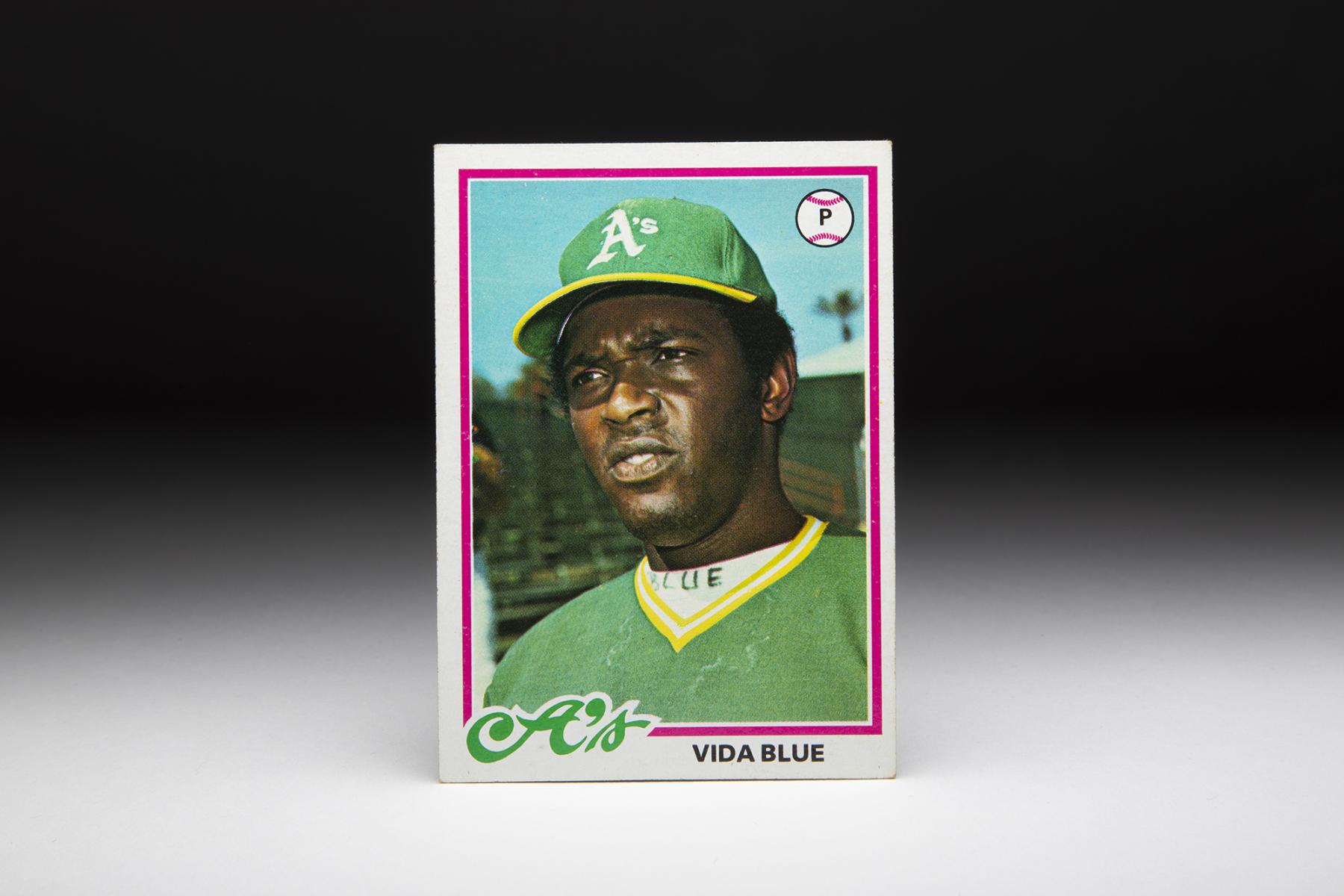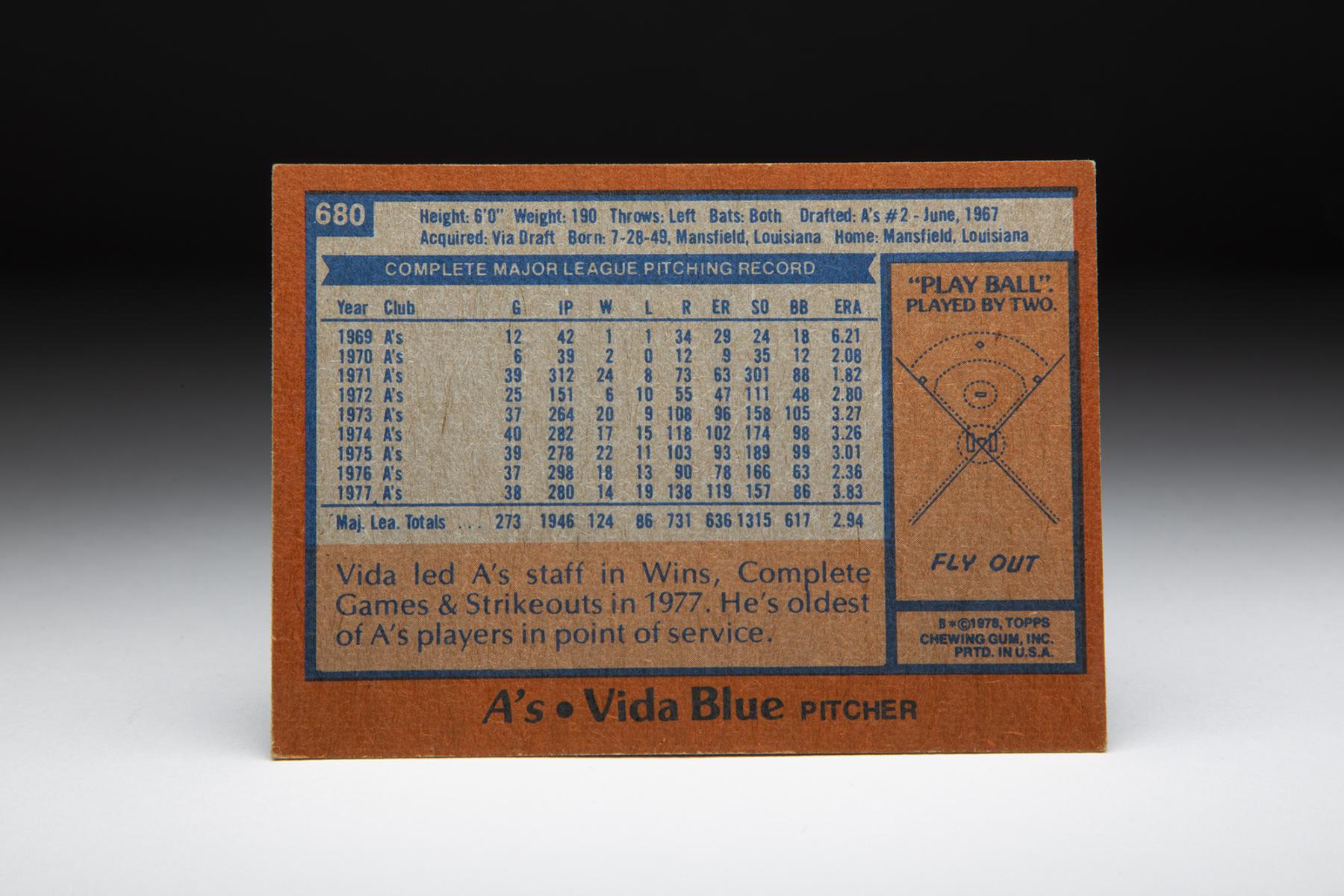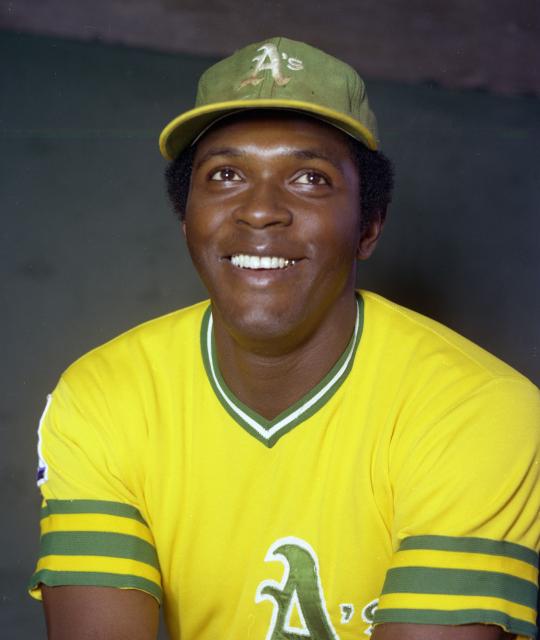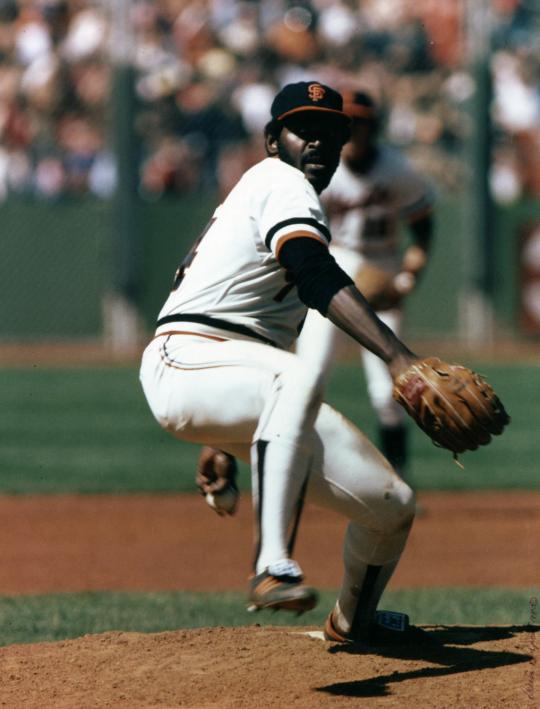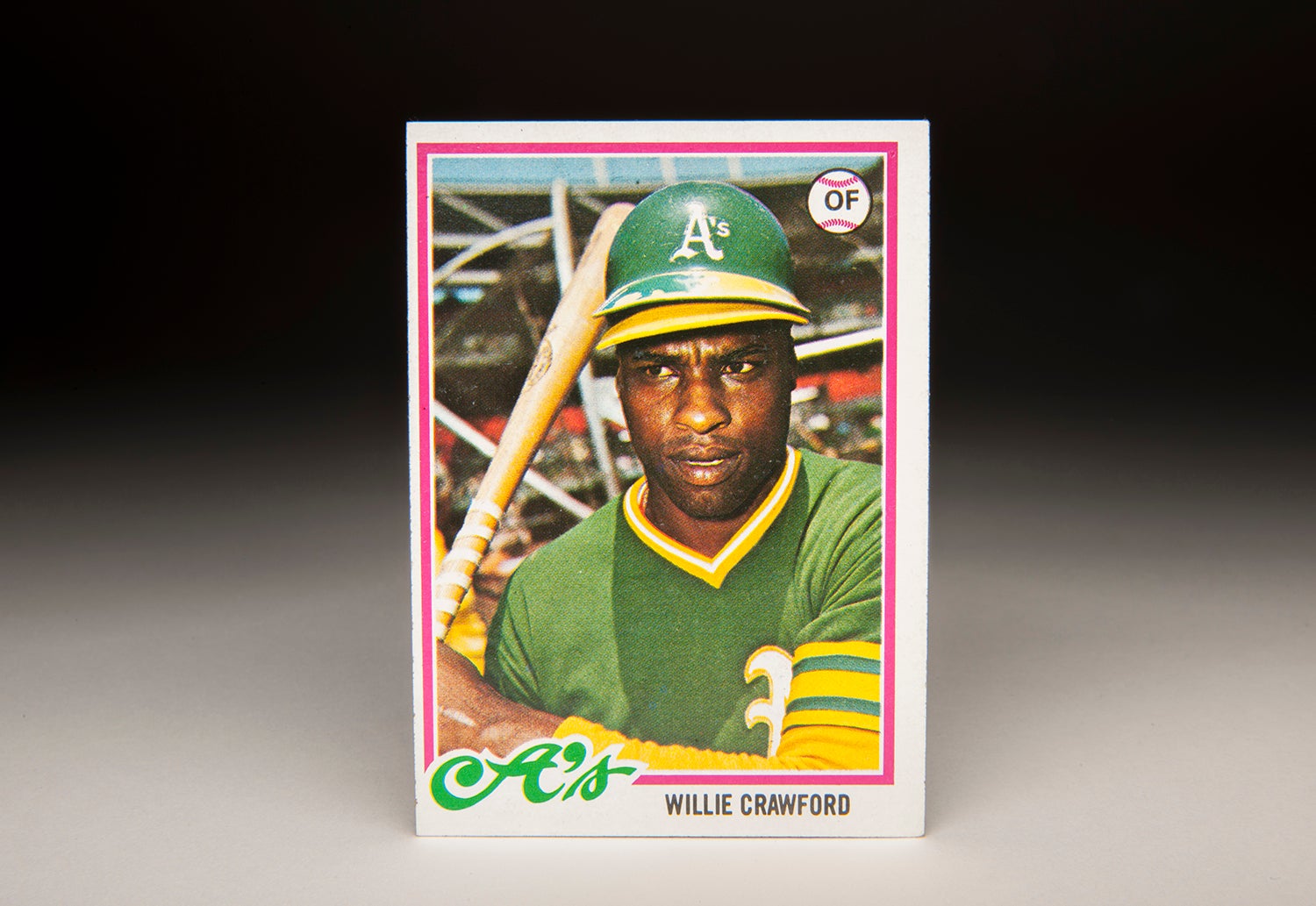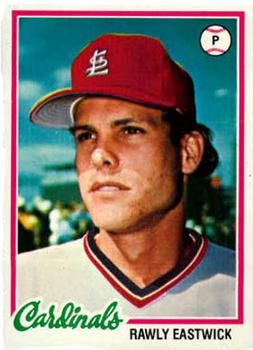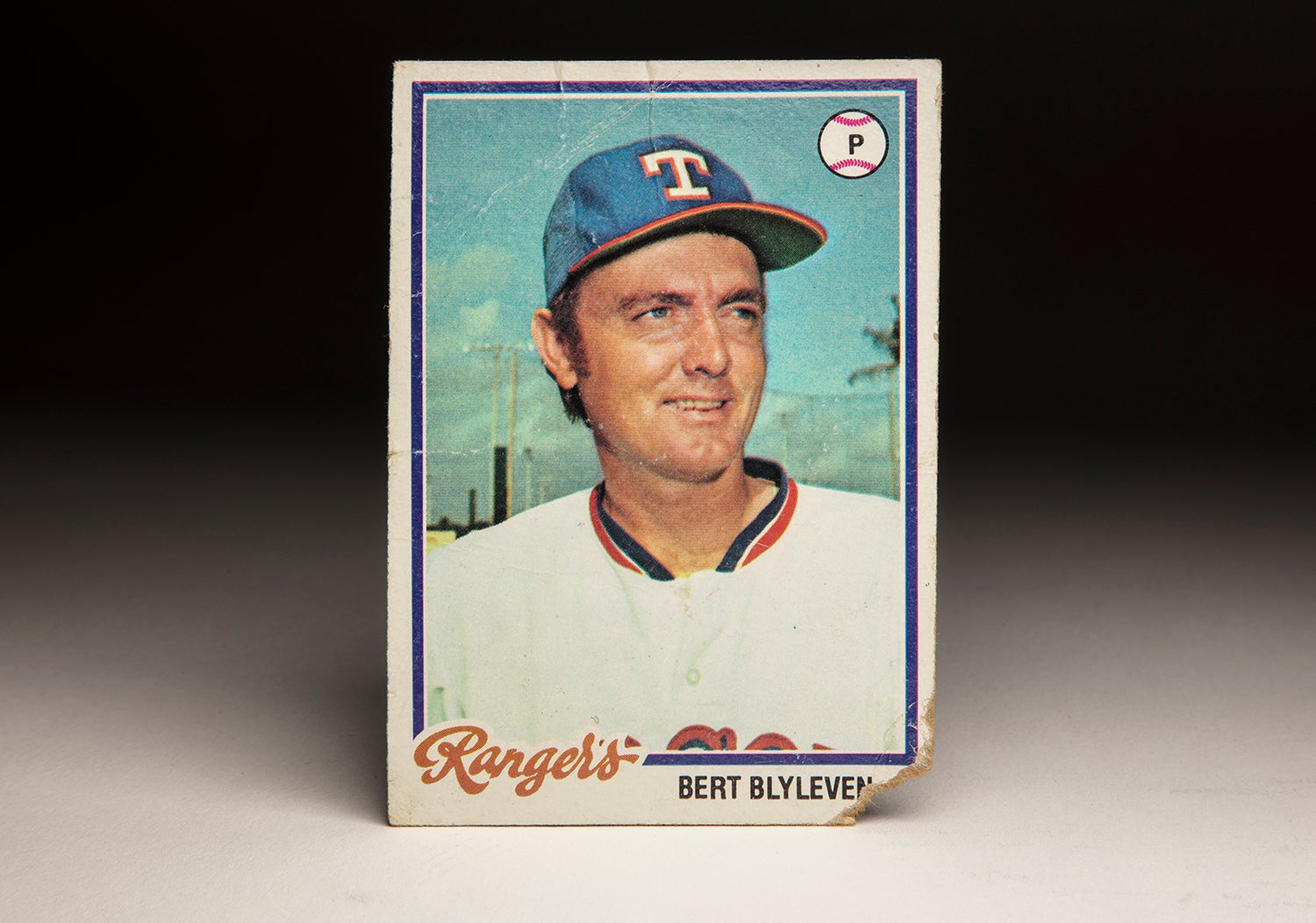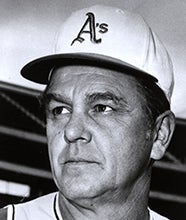- Home
- Our Stories
- #CardCorner: 1978 Topps Vida Blue
#CardCorner: 1978 Topps Vida Blue
He was the baseball story of 1971, and Vida Blue turned that season into his own at the age of 22.
And yet Blue’s best – as a pitching anchor of the dynastic Oakland A’s teams of that decade – was still to come.
Athletics Gear
Represent the all-time greats and know your purchase plays a part in preserving baseball history.
Born in Mansfield, La., on July 28, 1948, Vida Rochelle Blue starred in both baseball and football in high school, striking out 21 batters in one game on the diamond while throwing 35 touchdown passes in his senior season on the gridiron. He was taken by the Kansas City Athletics with their second-round pick (No. 27 overall) in the 1967 amateur draft and struck out 231 batters for the Class A Burlington Bees of the Midwest League in 1968 after the parent franchise had moved to Oakland.
By 1969, Blue was in the majors as 19-year-old left-handed flamethrower. He struggled to a 1-1 record and 6.64 ERA in 12 appearances before heading to Triple-A Iowa for more seasoning in 1970. There, Blue went 12-3 with a 2.17 ERA before the A’s made him a September call-up.
In his second start, Blue one-hit the Kansas City Royals on Sept. 11 – taking a no-hitter into the bottom of the eighth inning before Pat Kelly singled with two outs. Blue completed the one-hitter, then recorded a no-decision against the Brewers on Sept. 15.
Six days later, Blue no-hit the eventual AL West champion Minnesota Twins – striking out nine while allowing only a fourth-inning walk to Harmon Killebrew.
“I seriously started thinking about a no-hitter in the fifth inning.” Blue told McClatchy Newspapers Service. “I threw mostly fastballs. I didn’t have a good curve until late.”
Blue finished the season with a 2-0 record and 2.09 ERA in six starts for the Athletics then returned home to Louisiana. There, his hometown of Mansfield honored him with Vida Blue Day on Dec. 4.
A little more than seven months later, Blue stood at 18-3 after his first post All-Star Game start and appeared poised to make a run at a 30-win season. He was the talk of the sports world, landing on the cover of Sports Illustrated and attracting record crowds in every game he pitched – home or away.
He fell short of the 30-win mark at 24-8 – hampered by owner Charlie Finley’s order to manager Dick Williams to start Blue at home as much as possible, knocking Blue off his regular schedule. But Blue still but posted a 1.82 ERA, a league-best eight shutouts and 301 strikeouts en route to the 1971 AL Cy Young and Most Valuable Player awards. The A’s won 101 games and the AL West title that season, but fell to the Orioles in the ALCS.
“I’ve never seen a pitcher dominate a season like he did in 1971,” said former Oakland A’s teammate Sal Bando. “Vida was unhittable.”
The next season, Blue missed time due to a contract dispute, going just 6-10 in 25 appearances. But Oakland again won the AL West, and – with Blue working mostly out of the bullpen – the A’s defeated Detroit in the ALCS and the Reds in the World Series to capture the franchise’s first World Series title in 42 years.
In the postseason, Blue had two saves in eight games and posted a 2.57 ERA.
In 1973, Blue was 20-9 with a 3.28 ERA to lead Oakland to another World Series title. And the following year, Blue went 17-15 to help the A’s to a third straight Fall Classic win – becoming the only franchise besides the Yankees to win at least three World Series in a row.
“One of the greatest pitchers ever,” Finley said.
Blue went 22-11 to lead the A’s to their fifth straight AL West title in 1975, but Oakland lost to the Red Sox in the ALCS – marking the end of the A’s dynasty.
In 1976 – with free agency for many players coming that fall – Finley signed Blue to a four-year deal worth about $600,000. But on June 15 of that year, Finley sold Blue’s contact for to the Yankees in exchange for $1.5 million.
Three days later, Commissioner Bowie Kuhn declared the transaction void under the “best interests of baseball” and sent Blue back to the Athletics, setting off a firestorm of criticism throughout the game. But Blue put the distractions aside and wound up with a record of 18-13 in 1976. He was 14-19 the following season for an Oakland team that lost 98 games.
Prior to the 1978 season, Finley finally was able to make his deal. On March 15, Blue was traded across the Bay to the Giants for seven players and $300,000. Blue went 18-10 with a 2.79 ERA that year, finishing third in the National League Cy Young Award race. He was named to the NL All-Star team in both 1980 and 1981, becoming the first pitcher to win the All-Star Game in both leagues in the latter season when he was the pitcher of record in the NL’s 5-4 victory on Aug. 9 at Cleveland Stadium.
Blue was the starter and winner of the 1971 All-Star Game at Tiger Stadium.
Blue pitched for the Royals in 1982 and 1983 before missing the entire 1984 season while serving a suspension for substance abuse issues.
“I prayed a lot and just changed my lifestyle somewhat,” Blue said of his year out of baseball.
He returned to win 18 games over two seasons with the Giants in 1985 and 1986, then signed with the A’s as a free agent on Jan. 21, 1987 – only to retire one day before pitchers and catchers were scheduled to report to Spring Training.
His final numbers: a 209-161 record, a 3.27 ERA and six All-Star Game selections – along with three World Series championships with the A’s. He is one of 23 modern era pitchers (whose careers began after 1900) with at least 200 wins, a sub-3.30 ERA and more than 2,100 strikeouts.
He is the only pitcher in the modern era to have a 300-strikeout season and never have another campaign with at least 200 strikeouts, making his epic 1971 effort look like somewhat of an outlier. But after a season that virtually no one could top, Blue finished in the Top 10 of his league’s Cy Young Award voting four times and was a major part of three World Series winners.
Few pitchers combined a high peak and long-term success like Vida Blue.
Craig Muder is the director of communications for the National Baseball Hall of Fame and Museum

